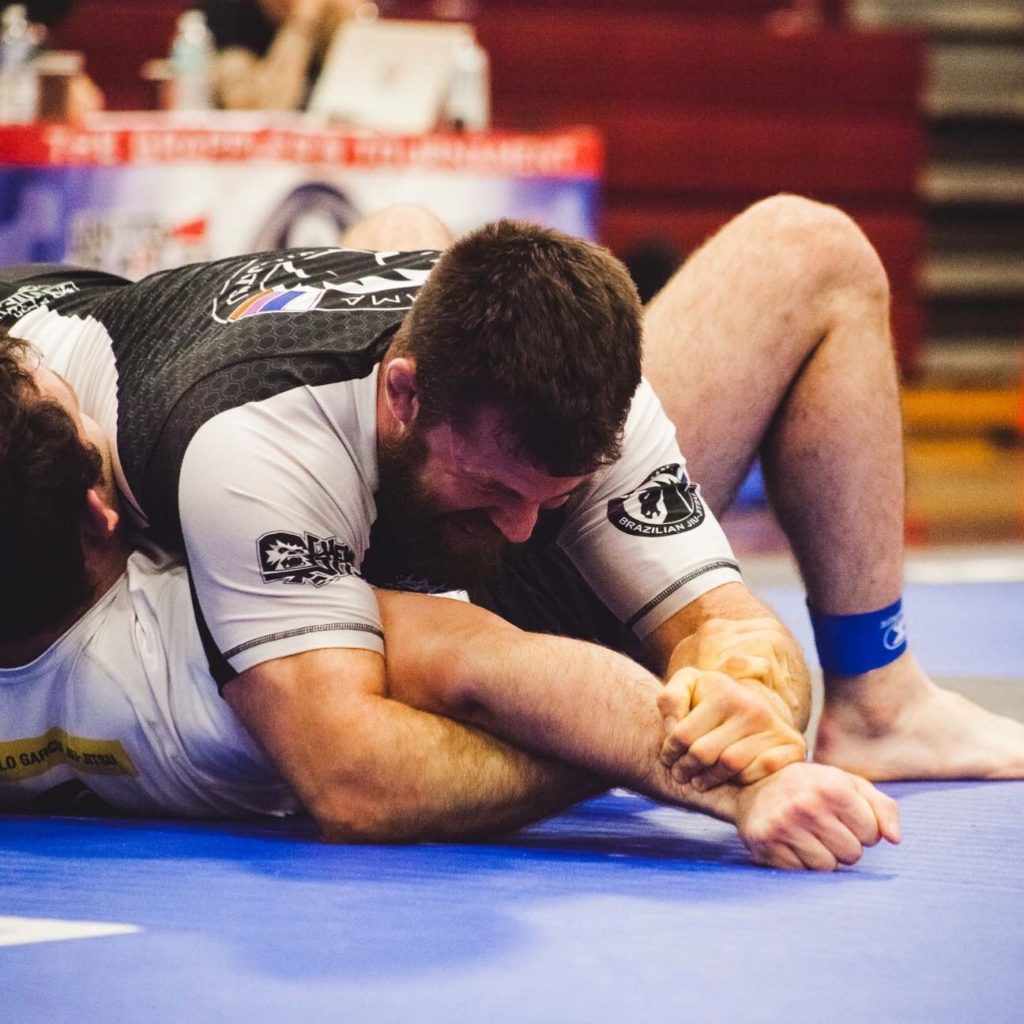
If you have been practicing Brazilian Jiu-Jitsu for any period of time, you have undoubtedly come into contact with the side control position. Depending on which side of the position you find yourself on, side control can be either a blessing or a curse.
From the top player’s perspective, side control is an excellent position from which to control one’s opponent, and it provides a number of submission and transition opportunities. From the bottom player’s perspective, side control is a completely different experience. It is uncomfortable, and it is difficult (but not impossible) to escape from; especially when coming up against a larger opponent.
Top side control is one of the most dominating positions in BJJ; it opens up a plethora of submission options including joints locks and a variety of chokes, as well as allowing you to transition into other dominant positions such as north-south and mount.
Unfortunately, if you are faced with a bigger, stronger opponent, chances are, it will be very difficult to submit them from side-control, however, it is not impossible…
Below are three fundamental submissions from side control that are versatile in both the Gi and No-Gi.
Americana
The Americana is a submission tactic used in Brazilian jiu-jitsu whereby the practitioner of the move takes control of his/her opponent’s arm and putting it in an “L” shape, making the elbow and shoulder joints vulnerable. The americana is a very powerful shoulder lock which is considered to be one of the easiest submissions to do from side control and mount.
This submission is very likely to be one the first submissions you are going to learn in BJJ. It can also be referred to at the “top shoulder lock,” “figure-four armlock”(catch wrestling name), “bent arm lock”, “keylock”, “V1 armlock”, the “paintbrush”, or the “ude-garami” (judo name).
The set up for the americana is fairly easy and it is also fairly safe. It gives you the luxury of going for the attempt, and if it doesn’t work you end up right back at the same position you were just at. Many submissions don’t have the same privilege, and come with a possibility of putting you in a less dominant position if they fail.
The Americana lock is part of an arm lock chain from side control. Those submissions include the Americana, kimura and straight armbar. All of these submissions are connected to one another if one technique fails you can go to another.
The Americana is a great submission no matter if you’re a white belt or a black belt. Once you’re able to isolate your opponent’s arm and lock the submission in it is just about game over.
Watch BJJ Black Belt Professor Gustavo Gasperin teach how to set up the americana trap from side control here:
Kimura
The kimura is another common submission that you will probably learn early on in jiu-jitsu. Also, known as the double wrist lock in catch wrestling this submission is very common and effective from side control.
Although this lock has been around for a long time in judo and catch wrestling, it has been named the kimura after the judoka Masahiko Kimura defeated Helio Gracie with this shoulder lock in their famous grappling battle, and not only did he get the submission he was gunning for, but also broke Garcie’s arm in the process. Of course, at the time of their match, this lock was known as gyaku ude-garami from judo.
The kimura is an incredibly versatile submission that can be used from a variety of positions and is a good method of control as well as a strong submission. The Kimura is both a submission and an entire system in of itself. The Kimura grip is available from a wide number of positions, including top side control.
To achieve the Kimura, you’ll need to establish a figure-four grip on your opponent’s arm while their forearm is pointing towards their waist. The grip is similar to the Americana. However with the Americana, their forearm points up towards their head, and the grip reverses.
You can use the Kimura grip to set up several attacks including back-takes, armbars, and of course, the Kimura shoulder-lock submission. Watch legendary BJJ coach John Danaher explain in detail of how to do the perfect kimura from side control,
Straight Armlock
The straight armlock is as old school as submissions get. It even features as far back as the very first “self-defense” instructional. The straight armlock is not one that was completely forgotten, however, it is one that most people skip over when they roll. Which is a real shame since it presents itself frequently during transitions between other submissions and positions of control.
Like mentioned previously the straight armlock can be linked with attacks such as the Americana and the Kimura, it is often a versatile option when the opponent defends the americana or happens to leave their arm in a straight position. In other words, whenever an opponent resists your Americana attacks they open up an armlock straight away. Because of this, it can be attacked from multiple angles and requires less strength to finish.
The straight armlock works much like the armbar. The ultimate aim is to place pressure behind the opponent’s elbow, on the side of the upper arm. The direction of the pressure needs to be opposite of the direction in which the elbow bends naturally. The main difference to that of the armbar is that you’re not using your hips to put pressure on the elbow.
As well as being a very traditional submission, it has also seen to have been used recently on a UFC main event (Fight Night 204) where Tom Aspinall won his first UFC main event by submitting Alexander Volkov with a straight armlock.
Roger Gracie displays it here, and says how he has been getting lots of people with his variation recently:
The post Side Control: 3 Fundamental Submissions appeared first on Grappling Insider.
